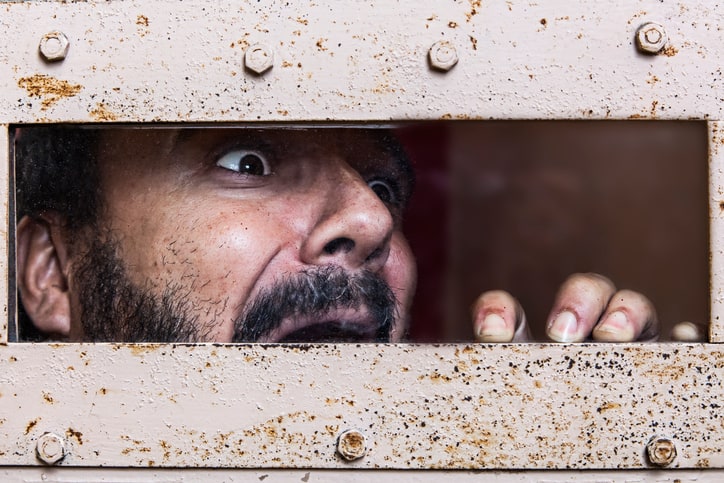Claustrophobia, Recognize Symptoms and How to Overcome Them

Have you ever felt scared when you were in a confined space or a tight space? It could be that you have claustrophobia or a phobia of cramped spaces. Usually, a claustrophobic will have excessive fear, even though there is really no danger of attacking. To find out more details, see the full explanation below, yes.
What is that claustrophobia?
Claustrophobia or claustrophobia is a type of phobia characterized by fear, anxiety, and excessive worry when in a tight space. For example, when you are in an elevator, tunnel, subway, to public toilets.
However, the truth is, when you keep trying to avoid this place, this phobia will only get stronger. Usually, when forced to be in a narrow room, sufferers claustrophobia will feel anxious. However, in cases classified as severe, people who are claustrophobic will have a panic attack.
One type of anxiety disorder can be triggered by many things. In fact, just thinking about certain situations without actually experiencing them, sufferers claustrophobic may already be feeling fear and anxiety.
If you have anxiety about being in a confined space for six months, then you probably have claustrophobia.
Symptoms that appear when experiencing claustrophobia
One symptom that may immediately indicate that you are a person claustrophobic is a panic attack that occurs when you are in tight, closed spaces. At that time, you may feel scared and frustrated because you feel you can’t do anything to get out of the situation.
However, apart from feeling extreme anxiety, panic attacks can also cause physical symptoms, such as:
- Sweating.
- Shaky.
- Heat or cold symptoms.
- Shortness of breath or difficulty breathing.
- Fast heart rate.
- Pain or tightness in the chest.
- Nausea.
- Headache and dizziness.
- Feelings of wanting to pass out.
- Numbness or tingling sensation.
- Dry mouth.
- The urge to go to the toilet.
- Ears buzzing.
- Feeling confused or disoriented.
If the conditions claustrophobia experience is classified as severe, you may also experience psychological symptoms such as:
- Fear of losing control.
- Fear of passing out.
- There was a sense of horror.
- Fear will die.
Panic attack symptoms reach their peak within ten minutes, with most attacks lasting anywhere from five minutes to half an hour. If you already feel the signs or symptoms of the phobia, it is better to immediately consult a mental health professional.
What causes claustrophobia?
This mental illness is usually caused by an event in the past that can cause trauma. Moreover, if the experience occurred when you were a child. There are several things that can trigger trauma and cause claustrophobia.
- Trapped inside a closed room for quite a long time.
- Have been a victim of bullying or violence.
- Parents who experience claustrophobia.
As already mentioned, claustrophobia can occur due to unpleasant experiences, such as turbulence while on a plane, or being stuck in a tunnel for a long time while riding the subway.
When parents experience this condition, children often experience it because they see the anxiety that radiates from their parents’ faces when they are in tight spaces. It could be that the child feels helpless because he cannot help his parents. This then triggers the child to feel the same way when he is in a narrow place.
How to solve claustrophobia?
In fact, all phobias can be cured. This really depends on the willingness of the sufferer and the right method to overcome it. Meanwhile, there are several medical treatment methods that you can try if you want to be free from this phobia. Among them:
1. Flooding
According to BetterHealth owned by the Victoria State Government in Australia, therapy flooding is one method that can be tried to treat claustrophobia. While undergoing this therapy, the patient will be asked to be in a narrow room which triggers feelings of fear and panic attacks that arise.
The patient will be asked to remain in the narrow room, until the panic attacks end. This aims to show the patient that being in a narrow and closed room, there will be no harm that will attack or hurt him.
2. Counter-conditioning
If the patient feels unable or not brave enough to undergo therapy flooding, there are other methods that can be tried to overcome claustrophobia experienced. Method called counter-conditioning this is done by teaching the patient relaxation and visualization techniques.
At that time, the things that trigger the appearance of claustrophobia will slowly and gradually be introduced to the patient. Then, at the same time, the patient is asked to face the situation while still concentrating on doing the relaxation techniques that have been taught.
This method is considered successful if the patient is successful in dealing with a situation that creates a feeling of excessive fear without feeling anxious or worried.
3. Modeling
The next method is called modeling. At this point, someone will provide an example for the patient on how to deal with their fear when they are in a situation that triggers claustrophobia without fear.
Then, the patient will be asked to imitate the way people do in the example when facing the triggers of the claustrophobia they experience. Patients will also be encouraged to remain confident, just like in the example, when doing so.
4. Cognitive behavioral therapy (CBT)
While undergoing CBT therapy, sufferers claustrophobia You will be asked to change your mindset and how to respond to situations when you are in a small room that can trigger fear and panic.
5. Use of drugs
There are also drugs that doctors can prescribe when experiencing this condition, including antidepressants or depression medication which can also be used to treat various mental health problems.
Hello Health Group does not provide medical advice, diagnosis or treatment.